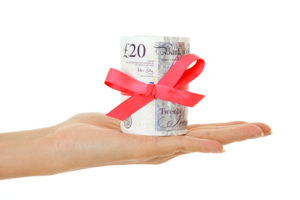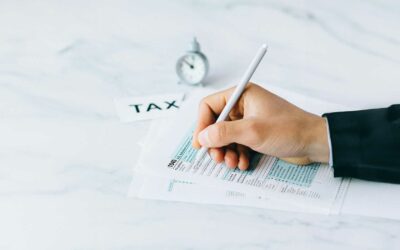Could you be due a wedding present from the taxman?

There are plenty of financial reasons for getting married. The old idea that two can live as cheap as one may not be entirely true, but it can mean cutting many of the costs of staying single.
Thanks to the Marriage Allowance, it can now also mean a tax break of nearly £900.
What is the marriage allowance?
The Marriage Allowance is a valuable tax concession introduced back in April 2015. It lets an individual who earns less than the personal allowance to transfer a percentage of the allowance to their spouse. This boosts the receivers personal allowance, meaning they can earn more before they start to pay tax.
Eligible married partners can receive a £237 tax break this year. But claims can be backdated – so couples could receive almost £900 via the Marriage Allowance.
Around four million married and civil partner couples are eligible for the tax break. HM Revenue & Customs reported last year that less than half were claiming. As a result, couples could be missing out on more than £1billion of savings.
You can earn more than the Personal Allowance
The non-taxpayer partner can have an income well above the Personal Allowance through savings interest or dividends and be eligible for the Marriage Allowance.
The position is complicated. The official guidance from the government gives the impression that the non-taxpaying partner can’t earn more than £11,500. In fact, several tax breaks have been introduced at lower income levels resulting in more people becoming non-taxpayers. So even if your income is above the Personal Allowance, you may still not be liable to tax. The position is complicated – it’s probably best to seek professional advice if a large proportion of your income is from savings, dividends or enjoy trading and property income allowance.
How to claim the Marriage Allowance
You both need to be born on or after 6 April 1935 and neither of you can be a higher or additional rate taxpayer. If one of you earns less than the personal allowance, they can transfer 10% of their personal allowance to their husband, wife or civil partner, as long as they are a basic rate taxpayer.
This increases their earnings threshold – the amount they can earn before tax kicks in – and so reduces their eventual tax bill. It applies even if you receive a pension or you live abroad, as long as you still get a personal allowance.
In November’s Budget Chancellor, Philip Hammond announced that the personal allowance would rise to £11,850 in the 2018/19 tax year. This means that this year £1,185 can be transferred to a partner, giving a £237 tax break.
However, the Marriage Allowance can be backdated up to four tax years.
- 2017/18 tax year: the personal allowance £11,500. £1,150 could be transferred, giving a £230 tax break.
- 2016/17 tax year: the personal allowance was £11,000. £1,100 could be transferred, giving a £220 tax break.
- 2015/16 tax year: the personal allowance was £10,600 £1,060 could be transferred, giving in a £212 tax break.
If you could backdate for all four tax years, you will be able to claim a total £899 tax break. You need your National Insurance number and details from your P60, payslips, passport or child benefit to prove your identity, and go online to the online Marriage Allowance application web portal.
The personal allowance will transfer automatically to a spouse or civil partner every year until you cancel. This may be because they start earning more, or because of a change of circumstances, such as divorce.
Levels and basis of reliefs from taxation are subject to change and depend upon your personal circumstances.
Book a free initial consultation
Book an initial consultation with one of our independent financial advisers or call us on 0345 643 0770 if you would like to discuss further.
Sources:
yourmoney.com – Married couples: check if you’re eligible for an up to £900 tax break – 4th May 2018



